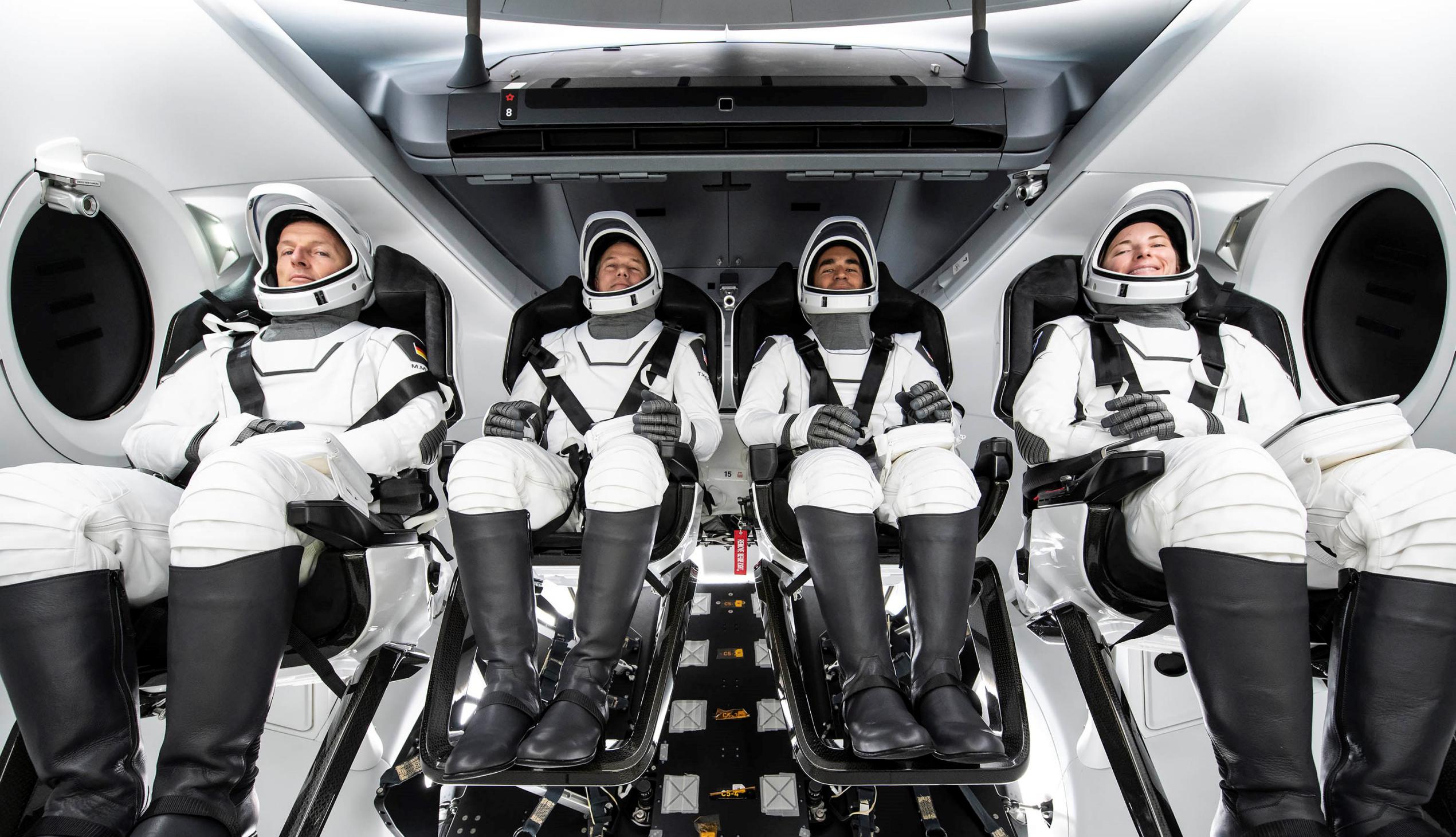
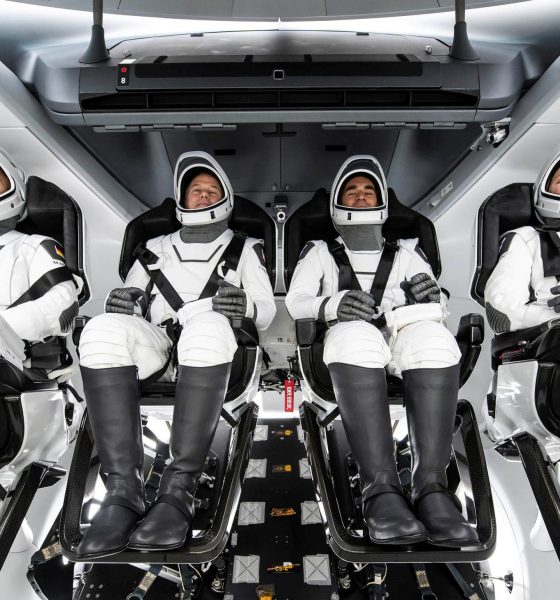
News
SpaceX’s next Crew Dragon astronaut mission settles on Halloween launch
After initially moving forward 24 hours from October 31st to October 30th, SpaceX’s next Crew Dragon astronaut mission has slipped back to its initial Halloween launch date.
Again scheduled to lift off around 2:21 am EDT (UTC-4) on Halloween morning, SpaceX’s Falcon 9 rocket and Crew Dragon spacecraft are on track to support their third operational NASA astronaut launch since November 2020. Known as Crew-3, the mission will carry NASA astronauts Thomas Marshburn, Raja Chari, Kayla Barron, and ESA (European Space Agency) astronaut Matthias Maurer to the International Space Station (ISS). A few weeks later, Crew-3 will take over command of the US ISS segment, allowing Crew Dragon Crew-2 astronauts Shane Kimbrough, Megan McArthur, Akihiko Hoshide, and Thomas Pesquet to return to Earth after some six and a half months in orbit.
Unlike Crew-2, which became the first astronaut launch in history to use a flight-proven orbital space capsule in April 2021, Crew-3 astronauts will head to the ISS inside a new capsule. Likely to be Dragon 2 capsule #10 (C210), SpaceX says it will be the first of at least two new Crew Dragons scheduled to join the company’s fleet of reusable crew capsules between now and mid-2022. Each Dragon 2 capsule (Crew and Cargo variants) is designed and rated to complete at least five orbital spaceflights before retirement and there’s a good chance that that five-flight limit can be expanded if needed.
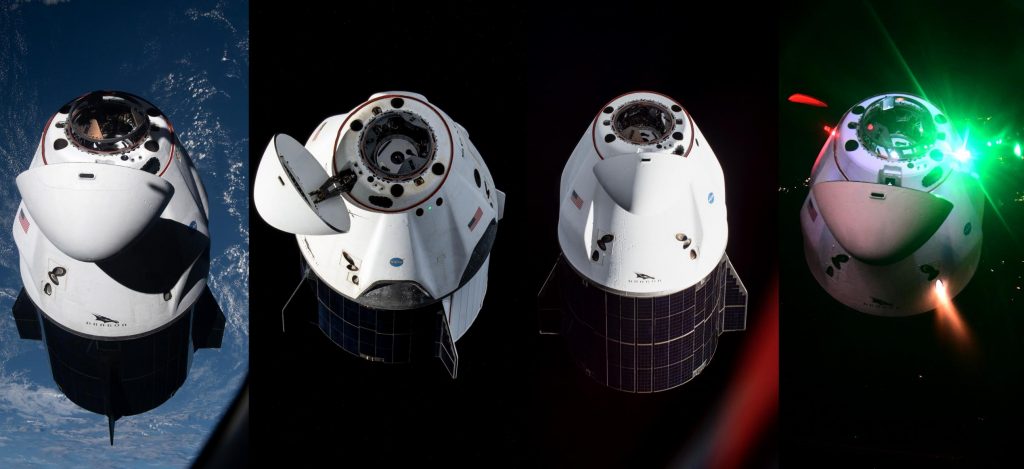
New Dragon aside, Crew-3 will still be the second time professional astronauts launch on a flight-proven liquid rocket booster – SpaceX’s Falcon 9. Between Crew-2 and Crew-3, SpaceX also launched four private, rookie astronauts – a world first – on a flight-proven Dragon and Falcon 9 booster, further strengthening the pair’s pedigree as the first privately-developed, reusable, human-rated rocket and spacecraft. Crew-3 will be Falcon 9 booster B1067’s second Dragon launch and second launch overall after a successful Cargo Dragon launch debut in June 2021.
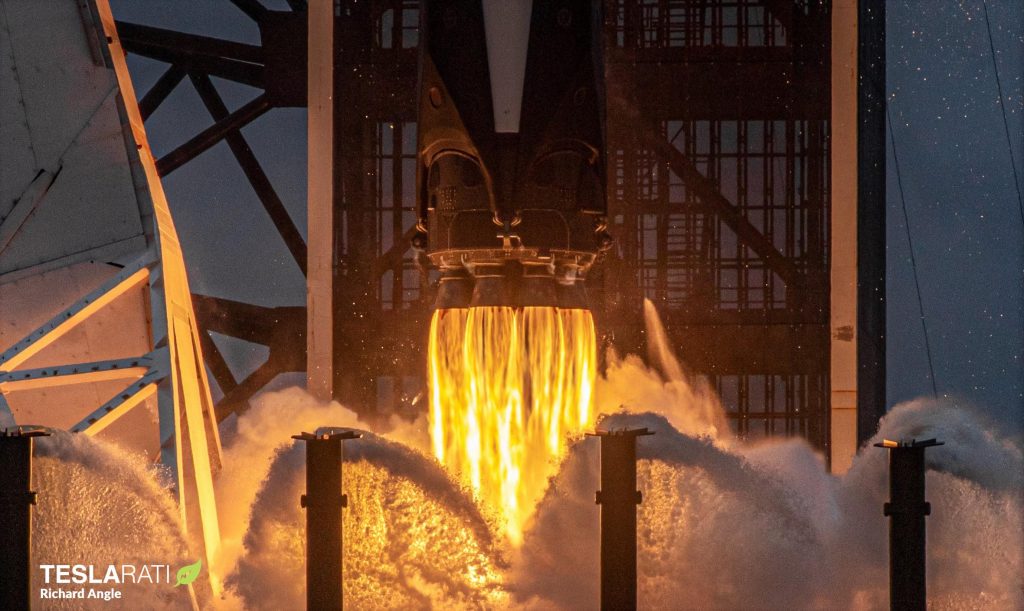
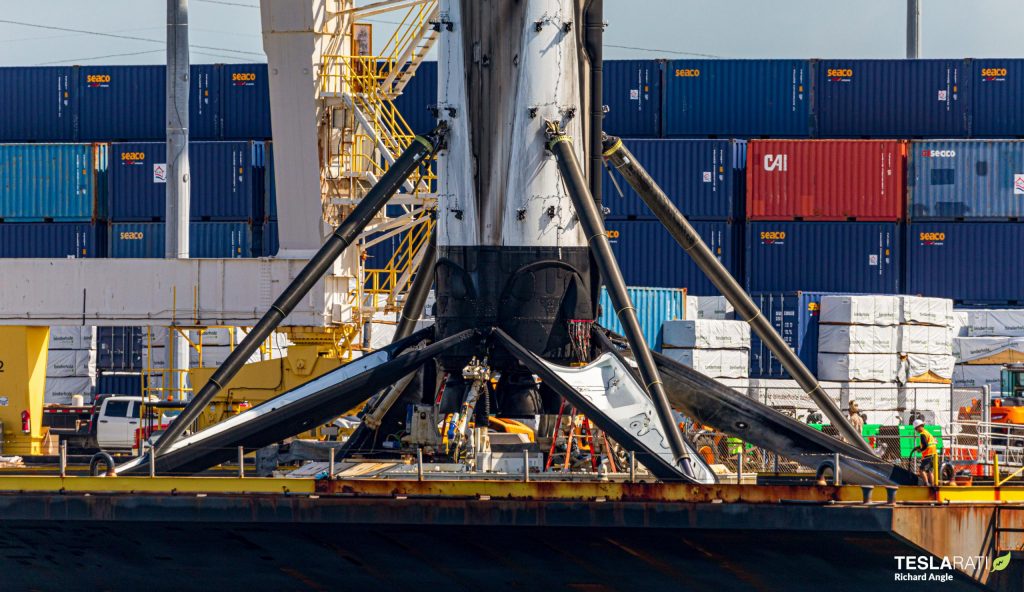
When the Commercial Crew Program culminated in NASA awarding SpaceX $2.6B to develop Crew Dragon and Boeing $4.2B to develop Starliner, the goal was always to field two redundant crew transfer vehicles and then alternate launches of those vehicles every six or so months. However, despite charging NASA almost two-thirds more than SpaceX to provide the exact same service, Boeing’s Starliner program has run into numerous hardware and software issues over the last two years, causing major delays.
As a result, more than 31 months after a SpaceX Crew Dragon aced its first uncrewed test flight to and from the space station and almost 18 months after Dragon launched its first two astronauts, Boeing’s Starliner has yet to complete a successful orbital test flight and yet to launch a single astronaut. Recently, Boeing’s second uncrewed test flight – required after Starliner suffered near-catastrophic software failures on its first attempt – has been delayed by chronic valve issues from July or August 2021 to May 2022. NASA has also begun shuffling astronauts originally scheduled to launch on Starliner’s Crew-1 equivalent mission to Crew Dragon’s August 2022 Crew-5 mission.
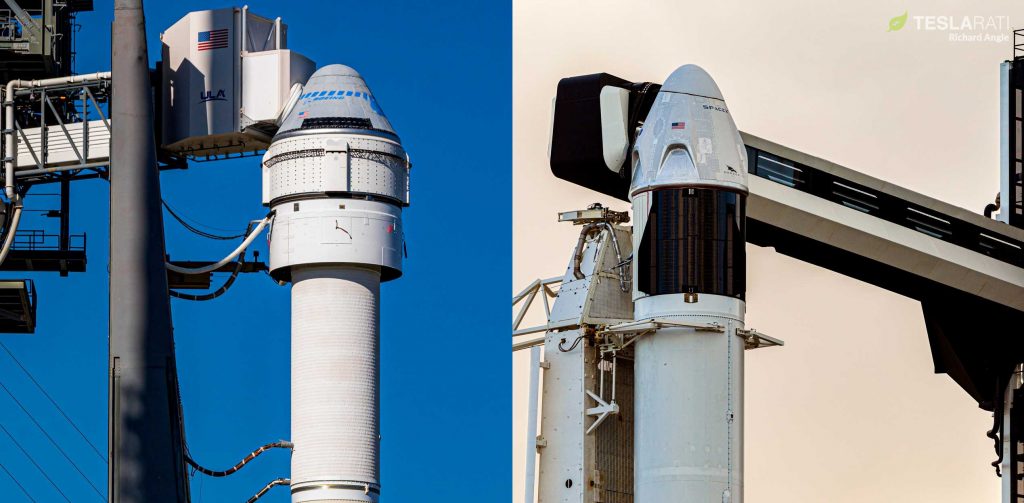
Starliner’s first crewed flight test (CFT) is entirely dependent upon the near-flawless success of OFT-2 – far from guaranteed. Per Boeing’s senior Starliner program manager, the current best-case scenario would see the company launch CFT six months after OFT-2 – no earlier than November 2022 if OFT-2 flies next May. In other words, based on the program’s history of chronic delays, it’s more likely than not that Starliner won’t fly crew until early 2023. Given Crew-5’s August 2022 launch target, Boeing would have to ace its crewed flight test, pass extensive NASA post-flight reviews, and achieve NASA certification in just a month or two for SpaceX and Crew Dragon to not end up flying Crew-6 in February or March 2023.
Put simply, Boeing has gotten itself into a situation where it would take a minor miracle for Starliner to complete a single operational launch before SpaceX launches all six NASA Crew Dragon missions currently on contract – and back to back, no less. Crew-3 will mark the halfway point to a milestone that would have been unfathomable just a few years ago.

News
Tesla dispels reports of ‘sales suspension’ in California
“This was a “consumer protection” order about the use of the term “Autopilot” in a case where not one single customer came forward to say there’s a problem.
Sales in California will continue uninterrupted.”

Tesla has dispelled reports that it is facing a thirty-day sales suspension in California after the state’s Department of Motor Vehicles (DMV) issued a penalty to the company after a judge ruled it “misled consumers about its driver-assistance technology.”
On Tuesday, Bloomberg reported that the California DMV was planning to adopt the penalty but decided to put it on ice for ninety days, giving Tesla an opportunity to “come into compliance.”
Tesla enters interesting situation with Full Self-Driving in California
Tesla responded to the report on Tuesday evening, after it came out, stating that this was a “consumer protection” order that was brought up over its use of the term “Autopilot.”
The company said “not one single customer came forward to say there’s a problem,” yet a judge and the DMV determined it was, so they want to apply the penalty if Tesla doesn’t oblige.
However, Tesla said that its sales operations in California “will continue uninterrupted.”
It confirmed this in an X post on Tuesday night:
This was a “consumer protection” order about the use of the term “Autopilot” in a case where not one single customer came forward to say there’s a problem.
Sales in California will continue uninterrupted.
— Tesla North America (@tesla_na) December 17, 2025
The report and the decision by the DMV and Judge involved sparked outrage from the Tesla community, who stated that it should do its best to get out of California.
One X post said California “didn’t deserve” what Tesla had done for it in terms of employment, engineering, and innovation.
Tesla has used Autopilot and Full Self-Driving for years, but it did add the term “(Supervised)” to the end of the FSD suite earlier this year, potentially aiming to protect itself from instances like this one.
This is the first primary dispute over the terminology of Full Self-Driving, but it has undergone some scrutiny at the federal level, as some government officials have claimed the suite has “deceptive” naming. Previous Transportation Secretary Pete Buttigieg was vocally critical of the use of the name “Full Self-Driving,” as well as “Autopilot.”
News
New EV tax credit rule could impact many EV buyers
We confirmed with a Tesla Sales Advisor that any current orders that have the $7,500 tax credit applied to them must be completed by December 31, meaning delivery must take place by that date. However, it is unclear at this point whether someone could still claim the credit when filing their tax returns for 2025 as long as the order reflects an order date before September 30.
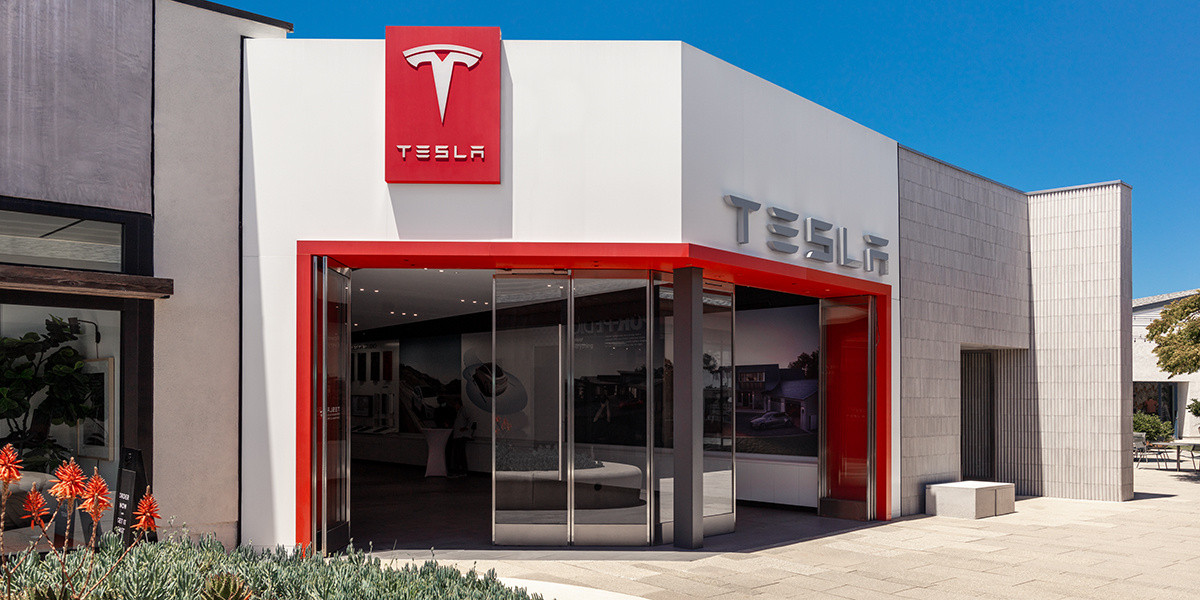
Tesla owners could be impacted by a new EV tax credit rule, which seems to be a new hoop to jump through for those who benefited from the “extension,” which allowed orderers to take delivery after the loss of the $7,500 discount.
After the Trump Administration initiated the phase-out of the $7,500 EV tax credit, many were happy to see the rules had been changed slightly, as deliveries could occur after the September 30 cutoff as long as orders were placed before the end of that month.
However, there appears to be a new threshold that EV buyers will have to go through, and it will impact their ability to get the credit, at least at the Point of Sale, for now.
Delivery must be completed by the end of the year, and buyers must take possession of the car by December 31, 2025, or they will lose the tax credit. The U.S. government will be closing the tax credit portal, which allows people to claim the credit at the Point of Sale.
🚨UPDATE: $7,500 Tax Credit Portal “Closes By End of Year”.
This is bad news for pending Tesla buyers (MYP) looking to lock in the $7,500 Tax Credit.
“it looks like the portal closes by end of the year so there be no way for us to guarantee the funds however, we will try our… pic.twitter.com/LnWiaXL30k
— DennisCW | wen my L (@DennisCW_) December 15, 2025
We confirmed with a Tesla Sales Advisor that any current orders that have the $7,500 tax credit applied to them must be completed by December 31, meaning delivery must take place by that date.
However, it is unclear at this point whether someone could still claim the credit when filing their tax returns for 2025 as long as the order reflects an order date before September 30.
If not, the order can still go through, but the buyer will not be able to claim the tax credit, meaning they will pay full price for the vehicle.
This puts some buyers in a strange limbo, especially if they placed an order for the Model Y Performance. Some deliveries have already taken place, and some are scheduled before the end of the month, but many others are not expecting deliveries until January.
Elon Musk
Elon Musk takes latest barb at Bill Gates over Tesla short position
Bill Gates placed a massive short bet against Tesla of ~1% of our total shares, which might have cost him over $10B by now
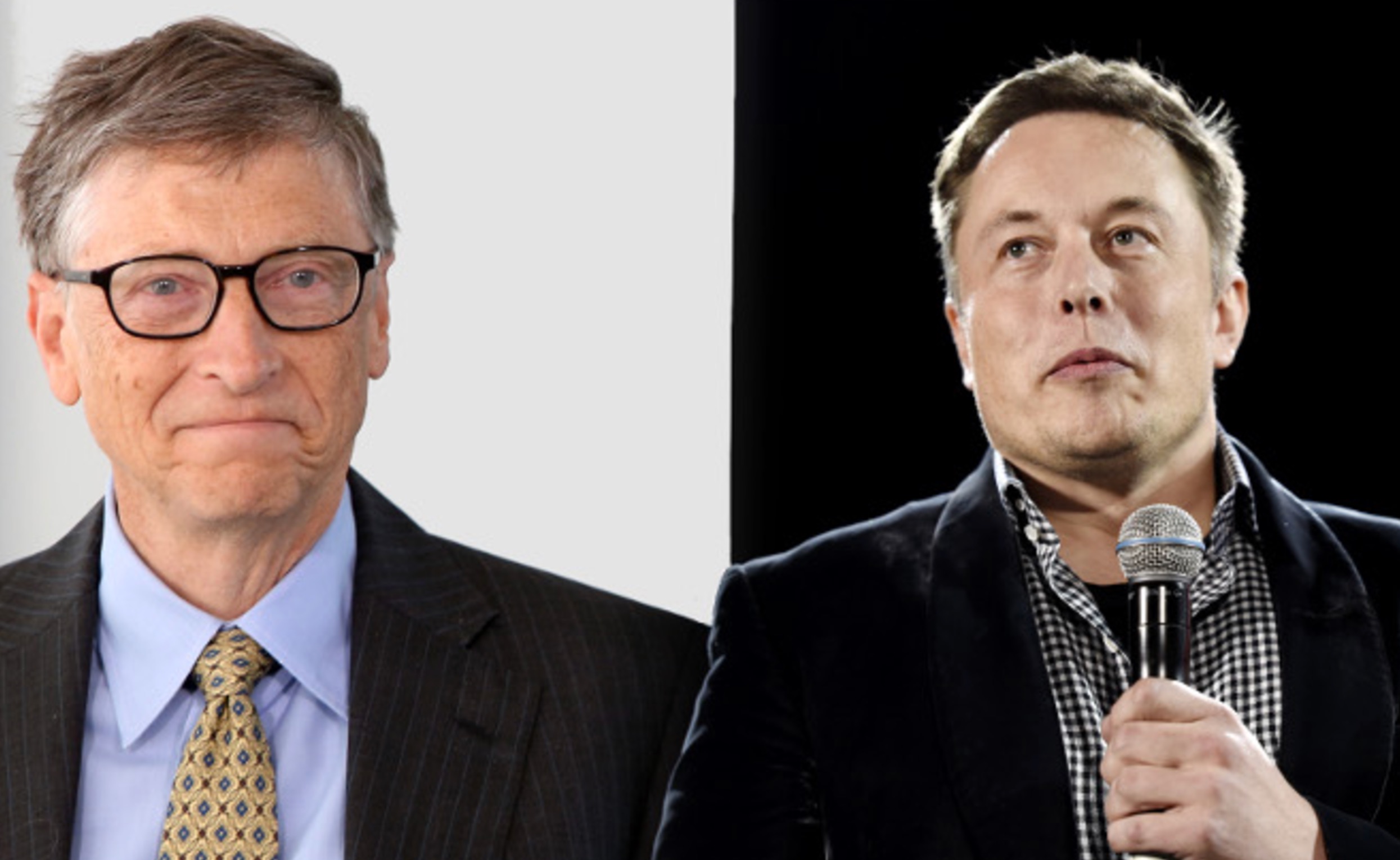
Elon Musk took his latest barb at former Microsoft CEO Bill Gates over his short position against the company, which the two have had some tensions over for a number of years.
Gates admitted to Musk several years ago through a text message that he still held a short position against his sustainable car and energy company. Ironically, Gates had contacted Musk to explore philanthropic opportunities.
Elon Musk explains Bill Gates beef: He ‘placed a massive bet on Tesla dying’
Musk said he could not take the request seriously, especially as Gates was hoping to make money on the downfall of the one company taking EVs seriously.
The Tesla frontman has continued to take shots at Gates over the years from time to time, but the latest comment came as Musk’s net worth swelled to over $600 billion. He became the first person ever to reach that threshold earlier this week, when Tesla shares increased due to Robotaxi testing without any occupants.
Musk refreshed everyone’s memory with the recent post, stating that if Gates still has his short position against Tesla, he would have lost over $10 billion by now:
Bill Gates placed a massive short bet against Tesla of ~1% of our total shares, which might have cost him over $10B by now
— Elon Musk (@elonmusk) December 17, 2025
Just a month ago, in mid-November, Musk issued his final warning to Gates over the short position, speculating whether the former Microsoft frontman had still held the bet against Tesla.
“If Gates hasn’t fully closed out the crazy short position he has held against Tesla for ~8 years, he had better do so soon,” Musk said. This came in response to The Gates Foundation dumping 65 percent of its Microsoft position.
Tesla CEO Elon Musk sends final warning to Bill Gates over short position
Musk’s involvement in the U.S. government also drew criticism from Gates, as he said that the reductions proposed by DOGE against U.S.A.I.D. were “stunning” and could cause “millions of additional deaths of kids.”
“Gates is a huge liar,” Musk responded.
It is not known whether Gates still holds his Tesla short position.








